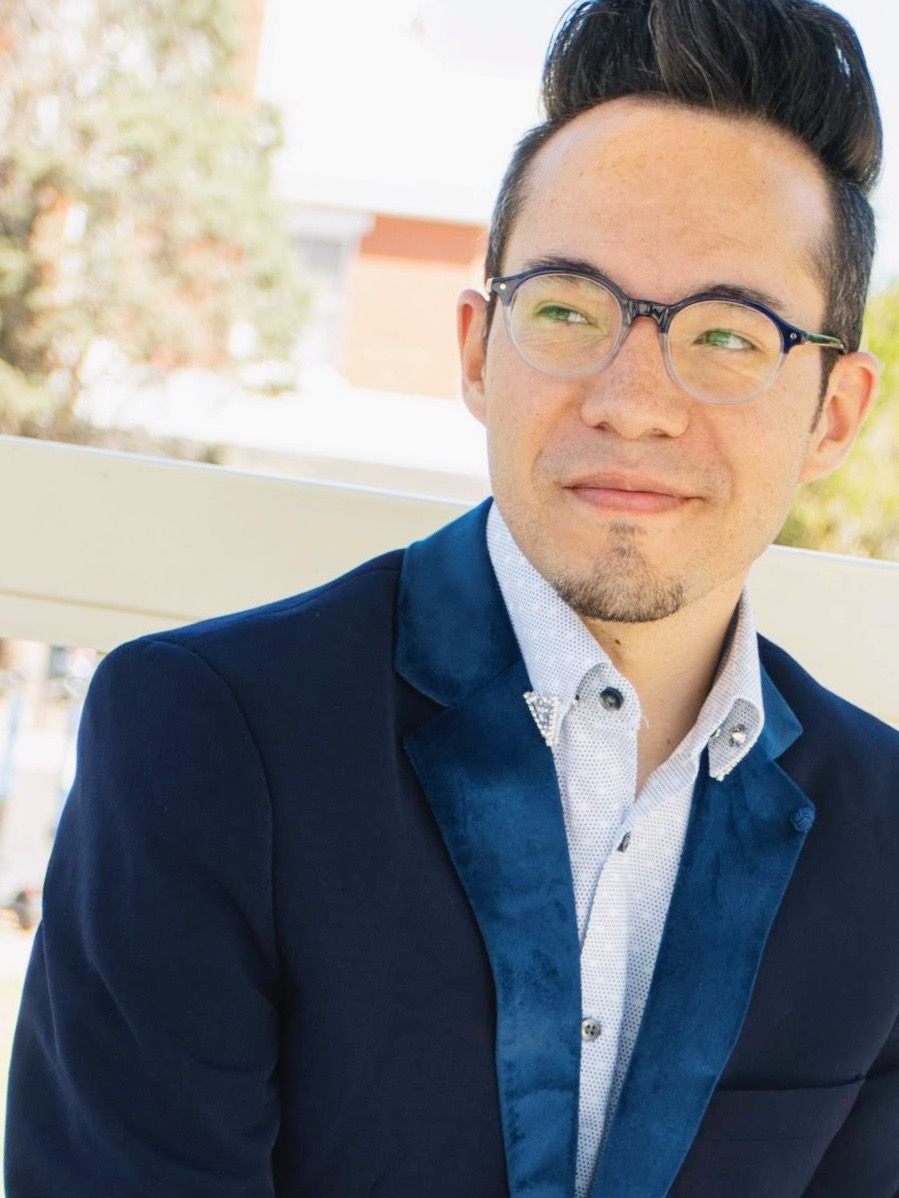The Christmas Effect
/December 2005.By Jaime Kleiman, Mpls.St.Paul Magazine.
Actor Tod Petersen used to shun the holiday season, but the more he ran from it, the stronger the pull of his family’s traditions beame. His play, A Christmas Carole Petersen, has become a tradition itself.
Tod Petersen, the forty-seven-year-old actor and cocreator of A Christmas Carole Petersen, Theatre Latté Da’s wildly successful holiday show, is sitting across the table from me, sipping tea. There’s a disconnect between the private, mild-mannered man I see before me and the animated actor I’ve seen on the Loring Playhouse stage, prancing around like a four-year-old boy hyped-up on candy and impersonating the endearing eponym of the show—his mother, Carole. Now in its sixth year, Carole, which runs through December 31, has quickly amassed a dedicated following of thousands of Midwesterners (more than 10,000 people have seen the show), from timid Christian hausfraus to flamboyant agnostics, from loyal Yuletide carolers to the most jaded of atheists.
Based on Tod’s life and his aversion as an adult to his family’s Norman Rockwell-inspired Christmas traditions, Carole spans four decades, beginning with his birth and concluding with the present. It is told through vignettes, songs, and letters, with Petersen acting both main characters—himself and his mother. As the play progresses, he transforms from a bright-eyed boy who used to love Christmas into a spiritually conflicted adult. At the end, he’s able to set aside his reservations and enjoy what he loves most about the holidays—spending time with his loved ones, without the stress of commercialism and forced reverence. By performing Carole every year, Petersen has found a way to keep his family traditions alive and address his misgivings about the holiday season at the same time.
Petersen’s skepticism about Christmas may explain the appeal of his show. “I think the show’s successful because my character questions Christmas,” he says. He believes people in the audience relate to his feelings of ambivalence and isolation during the holidays, when things are supposed to be “happy, happy, happy!”, as Carole’s character in the play intones, but rarely are. “I’m kind of cranky at Christmastime,” he says. “My loneliness comes up, [and] I resent the proliferation of Christmas. It takes up a quarter of our calendar, and not everybody’s Christian.”
Petersen was born in Hawaii, but was raised mostly in Mankato by his United Methodist parents, Dwain and Carole Petersen. He and his three siblings are “good friends,” says Carole, who fondly remembers when Tod was little and created shows and performed them for the family. His brother, Brian, puts it another way: “Christmas in my family was a huge performance, so Tod’s carrying on the tradition. It’s an extroverted family, and there’s a lot of competition to be center stage.” (It’s telling that Brian, the self-described “shy one,” has yet to see Carole. “Maybe you should talk to my shrink about that,” he jokes.)
Another side of Petersen that emerged early was his gift for helping those who were challenged or disabled. He combined his innate empathy and performing skills and earned a degree in theater and speech with a minor in special education from Mankato State University. He then spent the next decade of his life as a touring music-theater actor, playing mostly background and character roles. “I always was the tall guy in the back of the chorus,” he says. “That’s where I learned to act. I never thought I would have this kind of success. I never thought that what I did would mean so much to people. Great things have happened to me in my forties after years of being a blue-collar actor, and now I have a voice.”
That voice includes—in addition to performing Carole every year—performing, teaching, and working at Interact Center for the Visual and Performing Arts, an organization that helps artists with disabilities pursue and develop their art. Jeanne Calvit, Interact’s founding artistic director, has worked with Petersen since 2000. “There’s a lot of Petersen in A Christmas Carole Petersen,” she says. “There’s a healing quality to his work … and that’s the beauty of the show.”
When you watch Carole, several key elements combine to generate the warm feeling you’ll inevitably experience by the end of the night: The small Loring stage creates a sense of intimacy and coziness, especially as the abundance of winter coats competes for space amid the throngs of people, many of whom claim to have seen the show at least twice—sometimes twice in the same week. The mostly traditional music, sung tenderly by three vocalists, serves as the backdrop for the Dickensian narrative. Finally, Petersen himself is a commanding yet gentle presence putting on the posture of his well-meaning mother one moment and the pout of a petulant teenager the next. The stories he tells about growing up in his “Minnesota nice” household are painful for him and a reminder that everyone must learn to reconcile their past in order to move on with their future.
Petersen says his loneliness is rooted in his struggle to balance what he’s actually feeling with the apparent merriment of everyone around him. His existentialist ennui is not caused by family drama. In fact, his family members are so painstakingly normal that onstage they—and by extension, Petersen—become caricatures of themselves. Using a stereotypical Minnesota accent, a pinch of passive aggression, and precise gestures, Petersen depicts his mother with a studied panache. His lampooning of his family members is at times over the top, but free of the mockery and bitterness that often accompany autobiographical scripts. His pessimism contrasts with the rest of the Petersen clan, yet there’s a heart of gold (and familial reconciliation) lurking just beneath the surface.
The show is filled with gut-busting laughs and tear-inducing moments, a careful blend of light and dark. This expertly executed journey is what keeps people, including Mike Wenzel, fifty-six, coming back year after year. “This show and [Petersen’s] experience of growing up and having different traditions than his family [are] funny on the surface, but also very poignant,” says Wenzel, who’s seen the show multiple times. “The writing comes from his heart. The show could have been very mundane, just another Christmas story, but Petersen and [director] Peter [Rothstein] take it to another level.”
Petersen credits Latté Da artistic director and show cocreator Rothstein for creating the magic that Wenzel speaks of, that special something that wiggles its way inside every audience member by the end of the night. “Peter’s the smartest theater artist I’ve ever met in my life,” says Petersen, who’s worked with Rothstein for more than eight years. “He would ask me to tell him stories about Christmas, and then I would go home and write and hand it in to him. He’d look at it and ask, ‘Do we need this? Can we move this?’ Then he’s give it back to me, and I’d make sure it was in my voice, that it didn’t sound like a script, and we’d bat it back and forth until we were both happy.”
Rothstein also helped Petersen shape and design the piece, giving it the necessary theatricality to sustain a full-length production. “Autobiographical material is very tricky,” says Rothstein, who decided to use music to move the show forward emotionally. “There’s a danger to writing and acting your own [work]. There’s something music can do that words alone can’t.”
Exposing one’s private life is simultaneously thrilling, fulfilling, and frustrating. It’s a double-edged sword that cuts Petersen, as well as his family, both ways. As a result of this openness, Petersen’s fans can be, at times, unnervingly casual toward him. “I don’t like people thinking they know me,” he says. “I didn’t think the effect the play would have on [my] family—my mother’s feelings were hurt on opening night. Mom was upset because she found out about how I spent Christmas alone and that I lied. It wasn’t funny to her.” (Carole has since gotten over her hurt feelings, and she and Dwain attend the show every year.)
While grateful for the opportunity to share his intimate experiences with so many, Petersen says, “Mark Twain said, ‘A good storyteller tells the truth and exaggerates it,’ and I’ve embraced that. The play is not a documentary.” On the other hand, he knows people wouldn’t relate to the show if it were untruthful, if it, at its core, didn’t have poignancy, hopefulness, and honesty. His favorite part of the show is “how strongly audiences respond to my simple, normal Minnesotan life, and the deep connection they feel to it.” Petersen’s journey resonates with different kinds of people, from those who are estranged from their families or don’t have families to those who want to share a funny, touching experience with their loved ones.
Rothstein says that the Carole audience has shifted over the years. “It used to be younger and more urban, but the audience keeps getting broader and broader,” he says. “We get book clubs and church groups, and a bus comes up from Mankato every year. The audience has become very diverse.” Petersen, too, has noticed that the audience has become “older and straighter. They’re from that generation that has kids who question values and traditions, and they want to understand them. They can think, ‘There’s a family like ours. There’s hope for different kinds of families.’ It’s a positive portrayal of a family with differences.”
Rothstein thinks he knows the reasons Carole has become a stalwart of Latté Da’s season. “People say, ‘I’ve never laughed so hard, but then I also found myself crying,” he says. “It’s rich material, and it’s a roller coaster.”
Ultimately, what’s most apparent when you watch Petersen perform is that he, like all of us, has an inner child who still wants desperately to believe in the magic of something—the magic of the holidays, the magic of transformation, and the healing power of love. “My job as an actor is to open your heart and soul to the world,” he says, “and I believe that theater has the power to do that.”


